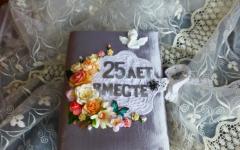The dress, the picture of which was posted on the Internet, divided the planet into two irreconcilable camps.
A photo of a strange dress (pictured in the middle), posted the day before by the portal BuzzFeed, literally blew up the Internet. “Guys, help me, is this dress white and gold or blue and black? My friends and I cannot come to an agreement, and we go crazy, ”wrote one girl, after which millions of users around the world went crazy.
Look at the image and determine: the dress in the middle is white and gold or blue and black?
Few could imagine that a simple picture could divide Internet users into two irreconcilable camps. Some furiously claim that they clearly see a dark blue dress with black lace stripes, others - White dress with gold lace.
It's really all about biology. The difference in perception is due to how the human eye and brain have evolved to perceive a world illuminated by light. Light entering the human eye hits the retina, which consists of two types of photoreceptors - cones and rods, which are taught in school. Sticks are more sensitive to light, and are more responsible for the perception of the shape, rather than the color of objects. Cones, on the other hand, are more responsible for the perception of color, rather than the degree of illumination of the object. In other words, at dusk we perceive the world with rods rather than cones.
The color range in which various objects are perceived depends on what is more in the retina of a particular person - rods or cones, and on what kind of light the object is illuminated with.
The rods perceive the intensity of light thanks to the visual pigment rhodopsin, which is very sensitive to low intensity light and is destroyed when exposed to bright light. At the same time, it takes about 45 minutes to recover, which is why a person takes time to get used to the twilight lighting normally.
For the same reason, if a person looks at a dress in bright light, then leaves for half an hour in a dark room and returns, then most likely the color of the dress will change for him.
“Our visual system is accustomed to sweeping aside information about the light source and drawing on information about truly reflected light. I have been studying individual color vision for 30 years, and in this case, I see the greatest differences in individual perceptions of any that I have seen, ”says Jay Neitz, a neurophysiologist at the University of Washington.
What's more, our perception of color is influenced by how our brains try to adjust colors and illumination in order to figure out what color an object actually has. Just as modern cameras adjust the light balance, the human brain does it automatically.
But at the same time, different people either ignore the blue shades, perceiving the image as white and gold, or ignore the yellow shades, seeing the blue and black dress.
Many other optical illusions have a similar nature, including the famous example of the black and white checkerboard squares.

Real dress colors
And this is what this dress actually looks like

The actual color of the dress coincides with the opinion of the minority - the posted photo shows that it is in fact blue-black.
What dress did you see?
Explanation
As they see white and gold
Looking at the picture, people who thought the dress was white and gold, most likely paid attention to the background. Taking the bright backlight for sunlight, they decided that the dress is in the shade, which means that its light areas should change tone towards a bluish tint (for example, due to the same sky).
This is how most people will see a white dress in this picture, although it is not.

As the "blue-blacks" see
“Blue-blacks”, on the contrary, look at the light areas of the dress out of context and clearly state that they are bluish or blue, while instead of “golden” fragments in the picture, they see black ones, keeping in mind the effect when, due to bright light, under at a certain angle, black becomes rusty brown or even golden.
This photo of the dress has become a real bone of contention. She divided the disputants into two groups - those who see it white and gold, and those who are sure that the dress is blue and black. At first glance at this photo, it is difficult to understand why there is so much hype around it. Are there not enough similar photos on the Internet? But since it started ... Here's what they write:
And they even go further in their assumptions: The unremarkable photograph has caused a lot of controversy on the Internet around the world. And all because most of the users see a white and gold dress in the picture, and people with mental disabilities are blue and black.
Let's finally find out what color this damn dress is ...
One small photo plunged all netizens into a state of panic. People go mad with despair and cannot find a place for themselves. Their heads wonder why different people see this picture differently!
Here's what people write in the comments:
From the beginning blue and black. Then it began to seem that it is blue with dark gold. It seems to me it's all about the features of the monitor screens in different people... In fact, as many monitors, as many people will see different shades this dress. I have the same crap all the time with my work: people on the monitor see fabric in such a shade, but when you bring it in, it seems to them that it’s not so fabric at all.
It `s Magic! my wife and I in the morning saw it clearly white and gold, then I sat at the monitor and it turned blue and black. I even thought, "What a stupid joke, they took a photo, changed it." and the wife continues to see white and gold
We argued with the rebz about this dress)))) She says that it is white with gold, but I can see that it is blue with bronze))
Oh, well, some kind of nonsense. For the sake of interesting questioned all the tenants of the apartment, all as one said that the dress is blue with black and gold (brown-green, but this is a subtlety) stripes. I tried to change the screen brightness, contrast, I even connected another monitor, meditated, persuaded, shouted, but white doesn't come out of blue. Some kind of catch.
I see that my employees are not working a damn thing. With this question, I was approached by two in work time, I briefly upset them with white and sand. Now I'm having lunch and bumping into full-blown paranoia on the internet. Those who dream of black (oh myne bastard) are crazy. Banal distortion of colors nedofoticom, wretched iso with all that it implies. I didn't read the comments - I don't want to know how many schizos are around))
What nonsense !!! Now I see white and gold. Although recently I saw blue and black
So there actually is:
The dress is black and blue and Roman Originals has confirmed this.
Official confirmation from Twitter: https://twitter.com/romanoriginals/status/571224722438004736/photo/1
Dress on Amazon: http://www.amazon.co.uk/Roman-Womens-Detail-Bodycon-Dress/dp/B00SJEUCWU
Image caption Blue or white is the question
This dress has split the internet in two. "Blue and black or white and gold?" - summed up Kim Kardashian the essence of the dispute on Twitter. How can we look at the same dress and see it so differently?
The answer to this question lies in the effect of sunlight on our color perception.
When we see something with our own eyes, we rarely have doubts about the reliability of what we saw. Meanwhile, mistakes do happen. If you think this dress is white and gold, you are totally wrong.
"What color is this dress? I see white and gold. Kanye is black and blue. Who is color blind?" - posted on Twitter Kardashian.
Commentators were quick to start a controversy in the comments. Actress Julianne Moore sees white and gold, while singer Taylor Swift and singer Justin Bieber see blue and black.
Expert opinion
We asked BBC Photo Editor Emma Lynch for help.
Image copyright Adobe twitterAfter computer analysis of the image, she gave an unambiguous answer: the dress is blue. By increasing the tone, but without adding other colors, it becomes apparent that the dress is blue, not white.
This conclusion is confirmed when we apply tools that show the color coding of each pixel. Different shades of blue are shown everywhere.
How it all started
The same is said by the person who originally disseminated the picture that caused so much controversy.
Kathleen McNeill plays in a folk band that performed at a wedding in Scotland. The bride's mother bought the very dress for the wedding, showed the photo to the newlyweds, and immediately a dispute broke out.
Kathleen McNeill confirms the dress is made by Roman Originals. It is sold in several colors, but white and gold is not among them.
Why do we see color differently?
According to the computer technology site Wired.com, the controversy is explained by how the human eye filters out the effect of daylight.
The same color can appear pink and red at sunrise, blue and white during the day, and red at sunset. But the brain makes allowances for sunlight and can identify another color as "real".
Therefore, some people see a blue dress, but their brain thinks that it is an optical illusion, but in reality the dress is white. Others are credited with blue color the dress itself.
This brain ability has evolved over thousands of years, but something about dress photography has exposed individual differences in color perception.
Most likely you have already seen this dress, and you probably have your own opinion about its colors. But the whole world still cannot come to an unambiguous opinion. For some it is invariably blue-black, for others it is white and gold and nothing else!
There were even cases when at first it seemed to a person that the dress was of the same color, and then after some time he was sure of the opposite!
This dress has already done too much trouble. It's time to face the truth and find out what color it really is.
The very photo of the dress, because of which there is so much controversy:
According to some, the original dress, if the lighting was better, should look like this:

Others believe that if it were not for the excessive light, the dress would be like this:

But why do people see different colors in the same photo? There is one version on this score, and it has nothing to do with monitor settings, nothing depends on them, we checked.
It's all about how the eyes of each individual person react to the illuminated object. Some people decide that the dress is not sufficiently lit (or that its surface reflects light strongly) and their brain sends a signal to their eyes to compensate for this. Hence the white and gold color. Others think that too much light is falling on the dress (or the surface is less reflective), and their eyes show them that it is blue-black.
Everything is as in the famous optical illusion Adelson. In the picture, square "A" is the same color as square "B", although it seems that this is not so.

In general, it turns out that a person's eyes see the image as the brain perceives it. Past experience is also important. If a person has seen a fabric of a similar texture or a similar dress of a certain color, this will most likely affect what color he sees in the photo with the dress. Little is known about this phenomenon, called "difference in perception".
And here is a photo of a real dress. It still turned out to be blue-black.

A few days ago, a photo with a dress blew up the Internet. This story has already passed me by, but today at work they still showed me a picture:
I still don't understand how you can see anything here other than a blue-black dress? 😃
 Roman Women "s Lace Detail Bodycon Dress Royal Blue
Roman Women "s Lace Detail Bodycon Dress Royal Blue
Returning home, I showed the photo to my five-year-old daughter, then to my wife. They independently named the dress white and gold. Moreover, the photoshop check did not convince them to look at the dress in a new way. Which led to this thorough investigation.
What Science Says
Objects in life shimmer in different shades depending on their surface (glossy, matte) and lighting. For example, snow is usually not white, but with a blue tint. Assuming that the subject in the photo is not illuminated by pure white light (for example, orange light from a fire), the brain tries to ignore this color shift. The brain does not want to leave its comfort zone and assume that the snow can be of different colors. It is much more common to "see" snow as white. Each person has a unique process of color correction, hence the controversy over the color of the dress.
Illusions of color perception
To understand that color perception is not so simple, here's a trick: stare at the center of the first picture, then click on it, and the second picture will appear in color for a moment.

The first picture is negative (picture with reversed colors). With a sharp switch of pictures, compensation continues in the brain, and shades of gray are painted in the desired colors. What exactly is going on in the head? Perhaps this is akin to addiction, and this is inherent not only visual perception... For example, the second candy no longer seems as sweet as the first.
What's with the dress?
So, the brain thinks out colors, focusing on its own experience and the environment. To estimate the conditions for photographing a dress, the brain needs to catch on to something familiar and understandable.
It's like the photographer looks for areas in the photo that need to be pure gray in order to compensate for the shooting conditions and bring the colors closer to the real ones ("white balance").
Our photo has several characteristic areas indicating bright yellow lighting (or the wrong shooting mode, which is identical to bright yellow highlights).

In addition, the main color of the dress is similar to blue, passed through a warm (that is, yellow) filter. Of course, experience is needed to see this for sure. Let's check this version: take a photo of a real blue-black dress from Google, put a beige filter on top of it. And finally, we put on top of the photo that very dress (cut along the contour). The blue and black colors, both in the light areas and in the dark ones, matched up to a millimeter. Let me emphasize what exactly the same conversion turned the blue and black colors into what we need:

Here's another photo to check that I haven't changed anything:

I hope after this picture your doubts about real color dresses have disappeared, and knowledge about the nuances of color perception remained. By the way, the saturation of blue on that very dress is 20-30%. For comparison, on a snow-white, non-glossy dress in daylight, the blue saturation is within 5%, unless you are near a large blue building. 20% is “confident” blue, this color is used in the header of the site in this post.
Reverse version check
In soft evening light, the snow-white dress of the bride can specifically turn into blue, but:
1) all colors, including red, yellow, and “gold”, will go blue with white, but this did not happen in the original photo (all these colors are present in the photo in an undistorted form);
2) the original photo was taken clearly not in the evening, but in the light of the sun (or indoors under identical conditions); light falls from above, this is indicated by clear shadows from the cape and from embossed stripes dresses.
To be fair, let's check this version in Photoshop: Google the white dress, and apply a cool blue filter. Imagine the dress is photographed on the beach late in the evening when the sun has already set. Although this contradicts the original image with very bright light yellow highlights. So, the "white" color does match, but let's take a closer look at what happens with the other colors:

The evening illumination from the sky is uniform, the shadows from such illumination are blurred and barely distinguishable, and the photo is dark over the entire surface. These properties are clearly not inherent in the original photo.
Golden color
Gold shimmers from light yellow to dark brown. The stripes on the dress (out of context) may be golden, but they lack the characteristic sheen:

The fabric has a smoother play and a noticeable roughness. This is what we see in the original photo on closer inspection. Left - black leather bag and a black plaid, on the right is a dress.









